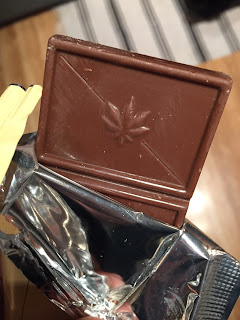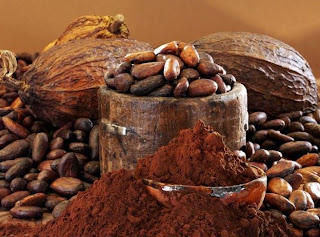Chocolate con historia "Nahua".
The chocolate was the drink of the Aztec emperors and European elites during the Renaissance. The industrial revolution made of this food of worship food for the masses, but at the cost of degrading its quality. Nahua chocolate recovers the historical tradition of gourmet chocolate and offers an exquisite selection of "Chocolate con Historia".
End of August 2012, I received a very nice sending of Costa Rica. Juan Pablo Buchert was been so nice to sended me this Nahua chocolate in a attractive brown recycled bag, good for nature of course.
End of August 2012, I received a very nice sending of Costa Rica. Juan Pablo Buchert was been so nice to sended me this Nahua chocolate in a attractive brown recycled bag, good for nature of course.
About Nahua (which means "people").*
The beans are from there own farm. The farm is 50 hectares + 30 hectares in total conservation + 10 hectares reforestation with native species.
They are also a training center for small scales farmers, free of charge, with an “open-door” policy for newcomers.
They are in the process to be certified as a Rainforest Alliance farm.
Cacao in Costa Rica
Cacao can be traced back in Costa Rica to the 17th century, but this crop was abandoned in the Northern Region of Costa Rica more than 20 years ago because of the lack of technical assistance to control diseases, a drop in market prices for conventional cacao, and the propagation of not very productive hybrids.
Twenty years later the situation is different: There is a market niche for high quality organic cacao and great progress has been made in scientific research about handling diseases and managing productivity.
Also known as Finca La Amistad, is located in Bijagua, Upala, in the Huetar Norte region of Costa Rica, has 100 hectares, of which 50 hectares have been planted in Trinidadian cacao and 10 hectares have been planted in native forest species, and 5 hectares have been planted in vanilla and other fruit varieties. Some 30% of the property is dedicated to absolute conservation. The cacao planted species pertain to selected clone varieties and are propagated using grafting. These varieties include species of Trinidadian cacao.
They employ workers from the local labor pool and supports social and environmental projects in its area of influence. The local population and the representatives of the Ministry of the Environment consider us to be a very good neighbor.
Location
The farm is located in the Canton of Upala in the Huetar Norte region of Costa Rica. The large forested areas (rainforest) that once were abundant in the Huetar Norte region have been disappearing. Today, small patches of rainforest can still be found, mostly in Guatuso, Los Chiles, and Upala. Human endeavors have turned the forests into pastureland (approximately 73% of the region). This region still has small isolated cacao plantations.
It is believed that the land in the Upala region has the characteristics needed for successful organic cacao crops in terms of acidity, humidity, water levels, and composition. To cope with a scarcity of economic activities that can help raise the quality of life for the region's inhabitants, especially activities implying low environmental impact, the possibility of re-launching organic cacao cultivation as an alternative proves to be very attractive.
Cocoa Tree in a Rainforest, Costa Rica
A special, well ventilated (yet sheltered from the wind) fermentation center has been constructed. The method selected involves boxes 60 centimeters high and 120 centimeters square with a capacity of 800 to 1,000 kilograms of wet cacao per box. These boxes are in tiers or steps to facilitate moving each box every two days for a total of 5-6 days, since this is Trinidadian cacao.
After fermentation, seed humidity must drop from 55% to 7-8%, the humidity at which the seeds should be stored and commercialized.
Juan Pablo Buchert recognize that Cacao quality is determined by factors including heritage, environment, and the processing facilities (fermentation and drying). Fermenting and drying must be mastered and kept in check to avoid variations in taste and perfume quality.
Juan wrote:... This week we were visited by the Quality Control Manager of Rausch Plantagen (Germany). We are working together to improve our fermentation practices at the farm, so I expect that we will be able to provide better beans and covertures in the very near future. Currently we are fermenting a very controlled batch that will be the standard".
On this moment they are developing 3 new flavors of the same 70% bar with a hint of mint, orange and apple/cinnamon.
Juan Pablo Buchert
Costa Rica
CR direct +(506) 2293-3058
US direct +(1) 305 831-4905
US fax +(1) 816 817-1619
Skype juanbuchert
certain indigenous peoples of Mexico and Central America, with native languages and dialects related to Nahuatl
More on COSTA RICA : http://kokobuzz.wordpress.com/category/single-origins/costa-rica-single-origins/


